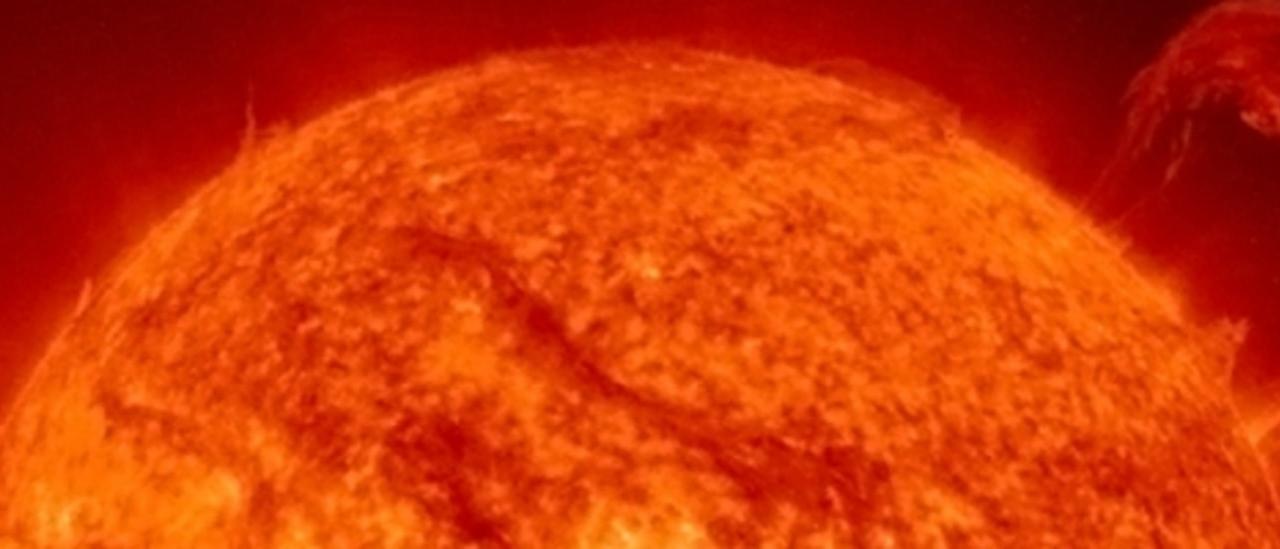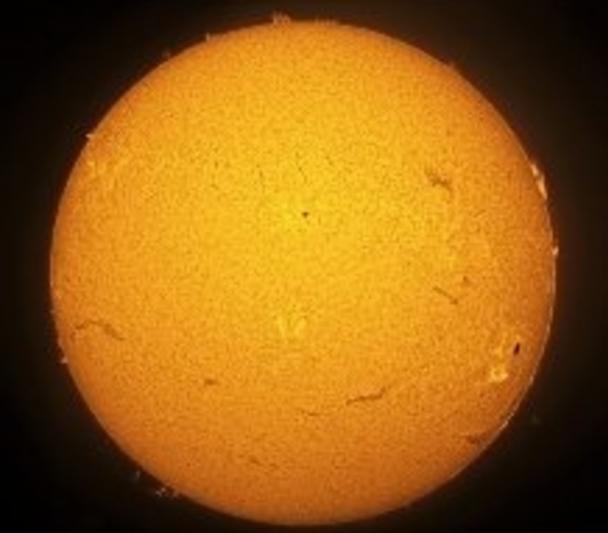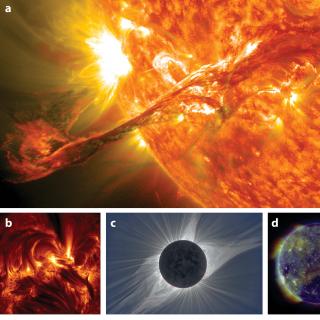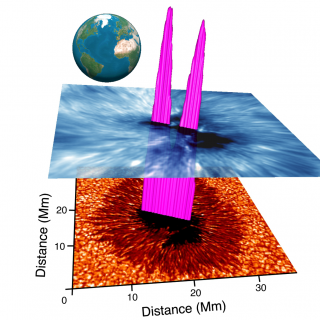General data
Physics of the Sun
The Sun constitutes a physics laboratory with complex interactions between its electrically conducting plasma and a strong magnetic field, in conditions that cannot be reproduced in our laboratories.
A new paradigm has been emerging that involves a connected view of the solar atmosphere linked by the magnetic field from the solar interior to the outer corona, as well as detailed local helioseismology in sunspots, loops and other magnetic features. The solar physics group of the IAC holds a leadership position in the investigation of the Sun in the framework of this global paradigm as exemplified by its role in major projects like the European Solar Telescope, the Solar Orbiter mission of ESA or the NASA-JAXA-IAC Chromospheric Ly-alpha Spectropolarimeter 1 & 2, and the leadership of the European Network SOLARNET.
The IAC's expertise in the development of polarimetric instrumentation (TIP & LPSP, Sunrise, GRIS, EST, and Solar Orbiter), in the development and application of diagnostic techniques for magnetized plasmas, and in 3D numerical radiation-MHD modelling has established the team as one of the most competitive and scientifically prepared in the world.
The major objective is to understand how the magnetic fields emerge from the solar interior through the surface and rise to the upper atmosphere, leaving in the meantime its imprint of complex interaction and releasing part of its energy to the medium.
Specific goals 2020-2024:
- To produce realistic one-, two- and three-dimensional models of key magnetic, dynamic and radiative processes in the solar atmosphere and convection zone using massively parallel computer facilities, in order to understand the physics underlying the solar structures and processes through suitable theoretical models.
- To carry out forward modelling from numerical simulations to bridge the gap between observation and theory, taking into account all the physical mechanisms that produce polarization in solar spectral lines.
- To develop novel diagnostic methods and inversion codes. Together with Bayesian inference tools, we will make a significant step forward on the quality of the information extracted from observations.
- To support space projects (e.g., CLASP, Solar Orbiter, Sunrise3) via new developments in observations and theory, including the modeling of the CLASP2 ultraviolet spectropolarimetric observations in order to study the magnetism of the upper solar chromosphere.
- To expand our understanding of the physics of the Sun by building a bridge between the knowledge gathered from solar observations and modeling, and the diversity of stars.
For previous specific goals visit: 2016-2019 IAC-SO website
Severo Ochoa Members




Main scientific outputs
Scientifics Outputs 2020-2024:
- Mapping the hidden magnetic field of the Quiet Sun. More than 99% of the visible surface of the Sun is filled with a tangled, unresolved magnetism. These “hidden” fields are thought to store enough magnetic energy to play a role in the heating of the Sun’s outer atmosphere, yet their field strength is still poorly constrained. This study shows that it is possible to combine magnetohydrodynamical simulations and multiline inversions to infer the average field strength of the quiet-Sun. The results reveal that the spatial distribution of the field is strongly correlated with convective motions and that the average magnetization is about 46 G. Trelles-Arjona, Martínez-González, and Ruiz Cobo. 2021, ApJL 915, L20.
- Exploring the Sun's upper atmosphere with neural networks. We have developed an inversion procedure, based on artificial neural networks, designed for high-resolution solar spectro-polarimeters, such as those of Hinode and the DKIST. The networks are trained with profiles generated from random atmospheric stratifications for a high generalization capability. When applied to Hinode data, we find a hot fine-scale network structure whose morphology changes with height. Temperature enhancements in the middle and upper photosphere have a reversed pattern. We also find hot arcs on the limb side of magnetic pores. We interpret them as the first piece of direct observational evidence of the “hot wall” effect, which is a prediction of theoretical models from the 1970’s. Socas-Navarro & Asensio Ramos. 2021, A&A 652, A78.
- Mapping solar magnetic fields from the photosphere to the base of the corona. In the framework of the CLASP international collaboration, unprecedented spectro-polarimetric observations of an active-region plage and its surrounding enhanced network have been obtained. They show circular polarization in ultraviolet (Mg ii h & k and Mn i) and visible (Fe i) lines. They have enabled to infer the longitudinal magnetic field from the photosphere to the very upper chromosphere. At the top of the plage chromosphere, the field strengths reach more than 300 G. This unique mapping shows how the magnetic field couples the different atmospheric layers and reveals the magnetic origin of the heating in the plage chromosphere. Ishikawa et al. 2021, Sci. Adv. 2021, 7, eabe8406: includes Trujillo-Bueno, del Pino Alemán, and Asensio Ramos.







